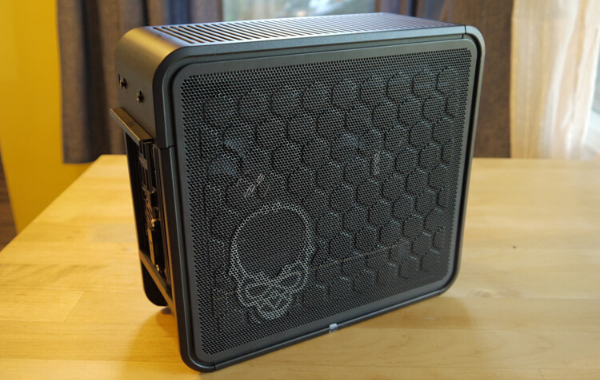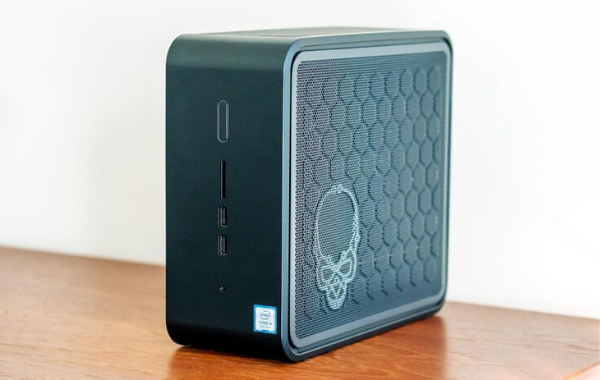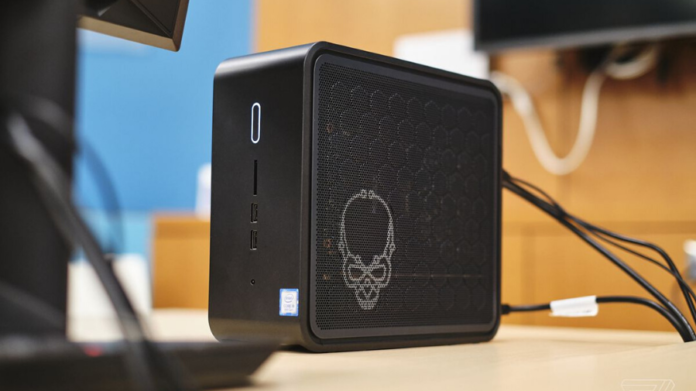Intel never refuses to bring up new and innovative devices in the market. Which is why it manages to stand better than all of its competitions. One such device of Intel is the Next Unit of Computing (NUC). It leverages small-form-factors, which significantly reduces the volume of the device. By far, Intel has released ten generations of this device. The most popular one out of those is the Intel Ghost Canyon NUC, that belongs to the 9th generation. And with each generation, Intel tried to enter various market segments.
Table of Contents
The Reaction of DIY Practitioners
Initially, DIY practitioners were not really happy with the product. They pointed out the limitations of it and said that it was not flexible enough. But with the 6th gen in 2016 and the 8th gen in 2018, Intel made some drastic improvements in it. Intel designed these generations by keeping in mind all the requirements of the enthusiasts. So, they were appreciated by everyone.
Then came in the high-end Intel Ghost Canyon NUC. This facilitates the development of a full-fledged system that help with gaming or work purposes. The product is in the market under the name ‘NUC 9 Extreme,’ and consists of the Intel Coffee Lake Refresh-H processor. Here are all the details about the product.
Design:

The design does not differ much from the previous NUCs, as it still comes with a round-edged look. But the major difference is the volume of the chassis. The initial generations of the product consisted of an 0.63-liter chassis. The 8th generation features a volume level of1.2-liter. But the 9th generation comes with chassis of 4.94-liter, which is impressive. This high difference is because of the PCIe video cards, that are supported by the Intel Ghost Canyon NUC. But it is still smaller than most of the CPUs that take up to 25-liter of volume. The Intel Ghost Canyon NUC can be an easy fit for small cabinets and shelves.
Design Specifications
Usually, devices that perform this high, have some kind of design specification that indicates its performance. But Intel kept it simple in its NUCs. The design is very basic square-ish, which consists of two USB-A 3.1 ports, an SDXC card reader, and a combo headphone/mic jack. And this was just about the front of the device. The available ports on the backside are:
- Four USB-A 3.1 ports
- A display port
- Digital Visual Interface
- An HDMI 2.0
- Two Gigabit LAN ports
- Two Thunderbolt 3 ports
Along with these ports, it supports Bluetooth 5 and WiFi 6. With all these, a person can easily use the device either for gaming or as a workstation. So despite being basic designed, the device proves to be pretty powerful.
Various Parts:

As the Intel Ghost Canyon NUC is a really flexible device, people can customize it according to their requirements and use-cases. The basic parts of the elements from which a person can choose are:
- The Compute Element: The processor mounted in the compute element is one of the three, Core i5, Core i7, and Core i9. The turbo power of the i9 processor can increase up to 5GHz. The cooling shroud of the element consists of a single fan along with two thermal pads attached, M.2 heat sinks. There are two SODIMM slots too on the right of the element.
- Chassis: As mentioned above, the chassis volume of the Intel Ghost Canyon NUC, has been increased significantly as compared to the previous NUCs. The device has a plastic and metal body. Front penal uses plastic material, while the rest of the body consists of metal. This way, the cassis get a premium look.
- DRAM: This comes with up to 2x DDR4-2666 SODIMMs. This can be chosen by the buyer, according to their personal or professional use.
- Discrete GPU: The Intel Ghost Canyon NUC model does not include this by default in their design. But this can be customized with the buyer’s choice. Also, as this is absent in the basic design, the overall arrangement of the chassis becomes simple.
- Baseboard: There are various PCIe slots present on the baseboard of Intel Ghost Canyon NUC. Power is supplied to these PCIe slots by the baseboard as it is explicitly connected to the PSU for power. One x16 slot is for the device’s compute element. And there are two ASMedia ASM14480 mux/de-mux chips too.
- Non-volatile storage: The HDD and SDD are again up to the buyer’s choice. They can customize the storage as per their use of the device.
- PSU: The Power Supply Unit is built-in the device. The PSU used is a 500W 80 PLUS Platinum one. This again adds to its compact design, as this directly connects to the supply with a plain power cord.
Price:

The i5, i7, and i9 processor versions start from $1,050, $1,250, and $1,700 respectively. These include the basic components of the device. While the customizable parts have to be purchased separately. But the $1,700 model comprises almost all the high-end parts. The performance of the device compensates for its price. Similar performance PCs are usually quite high in price and bulky too.
Conclusion:
The device performance is incredible. Its simple design can be a point of concern for some people if they want their high-performance devices to look a little exceptional. But the fact that it comprises almost all the ports to make a full-fledged gaming station or work station, makes it worth the buy.
The Intel Ghost Canyon NUC is the future of minicomputers, as it can easily replace the bulky PCs. As the device can easily fit in a self or a cabinet, so space is not an issue and it can be used anywhere. And if Intel will continue to make them better with each generation, soon they will be seen with everyone because they are quite flexible.
If you have any other queries related to Intel Ghost Canyon NUC, just drop your question in the comment box and we will answer all your queries.












